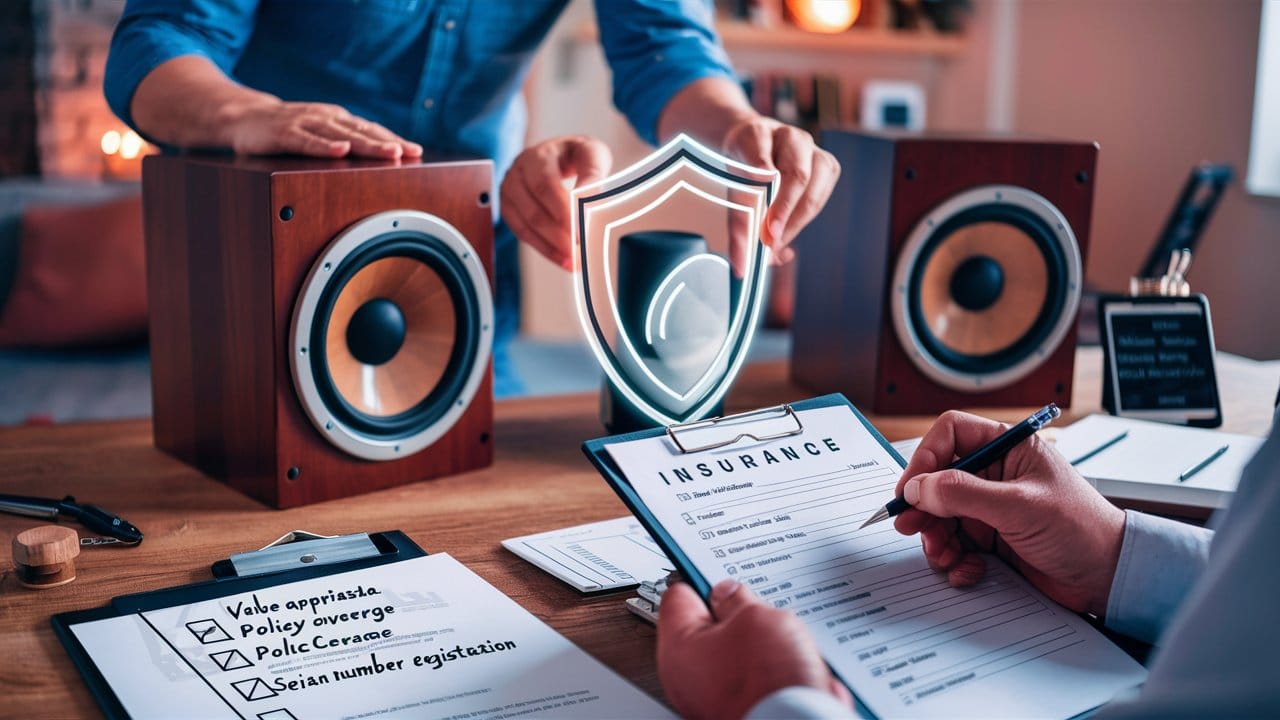Protecting valuable assets like speakers is essential, especially if you’ve invested in high-quality audio equipment. Whether you’re an audiophile, a professional musician, or someone who simply loves great sound, insuring your speakers can provide peace of mind. But how exactly do you go about it? This guide breaks it down step by step.

Why Insure Your Speakers?
High-quality speakers are not only a financial investment but also a cornerstone of many entertainment setups. Unfortunately, they’re vulnerable to risks such as theft, accidental damage, and natural disasters. Here are some key reasons to consider insurance:
- Protection against unexpected events like floods, fires, or break-ins.
- Coverage for accidental damages that could otherwise be costly to repair.
- Peace of mind, knowing your investment is safeguarded.
Types of Insurance That Cover Speakers
Before diving into the process, it’s essential to understand which insurance policies typically cover speakers.
1. Homeowner’s or Renter’s Insurance
Most homeowner’s or renter’s insurance policies include coverage for personal belongings, which can encompass speakers. However, these policies often have limits, especially for high-value items.
- Pros: Offers broad coverage for various perils.
- Cons: May not cover the full value of expensive speakers.
2. Specialized Electronics Insurance
If you own particularly high-end or professional-grade speakers, specialized electronics insurance might be a better option. These policies are designed specifically for expensive electronic devices.
- Pros: Comprehensive coverage tailored to electronics.
- Cons: Typically more expensive than general insurance.
3. Manufacturer’s or Retailer’s Extended Warranty
Although not traditional insurance, extended warranties can provide coverage for mechanical failures or defects.
- Pros: Covers specific issues related to manufacturing.
- Cons: Limited to defects and not general damages or theft.
Steps to Put Speakers Under Insurance

Step 1: Assess the Value of Your Speakers
Start by determining the replacement cost of your speakers. If you have the original purchase receipt, it’s a great place to start. For older models, look up the current market value online or consult an expert.
- Tip: Document your speakers’ model numbers, serial numbers, and any custom modifications.
Step 2: Check Your Current Insurance Policy
Review your existing homeowner’s or renter’s insurance policy to see if speakers are covered. Pay attention to:
- Coverage limits for personal property.
- Exclusions that might apply, such as damage caused by pets.
- Deductibles you’d need to pay in case of a claim.
Step 3: Consider a Rider or Floater Policy
If your current policy’s coverage is insufficient, consider adding a rider or floater specifically for your speakers. This ensures they are insured for their full value.
- Rider: An add-on to an existing policy for specific items.
- Floater: Similar to a rider but provides broader coverage.
Step 4: Explore Specialized Insurance
For professionals who rely on speakers for their work, such as DJs or event organizers, specialized insurance might be the best choice. These policies often include coverage for:
- Damage during transport.
- Use at events or venues.
- Worldwide coverage.
Step 5: Document Everything
Insurers will typically require proof of ownership and value. Make sure to:
- Keep purchase receipts and appraisals.
- Take photos or videos of your speakers.
- Save warranty and repair documentation.
Step 6: Compare Quotes
Insurance premiums can vary widely, so it pays to shop around. Compare quotes from different providers and consider factors such as:
- Coverage limits.
- Deductibles.
- Additional benefits, like coverage for rental replacements.
Step 7: Finalize the Policy
Once you’ve chosen the best policy, finalize the paperwork and make sure you understand the terms. Ask your insurer about:
- Claim filing procedures.
- Policy renewal details.
- What to do in case of disputes.
What to Do After Insuring Your Speakers
Once your speakers are insured, take steps to minimize risks:
- Invest in security systems: Alarms and cameras can deter theft.
- Use surge protectors: Protect your speakers from electrical damage.
- Store them properly: Keep speakers in a safe, dry location.
Conclusion
Putting speakers under insurance doesn’t have to be a daunting task. By assessing their value, reviewing your options, and choosing the right policy, you can ensure your investment is protected. Whether it’s through homeowner’s insurance, a specialized policy, or an extended warranty, the peace of mind is worth the effort. So take the first step today and safeguard your sound setup for the future!
